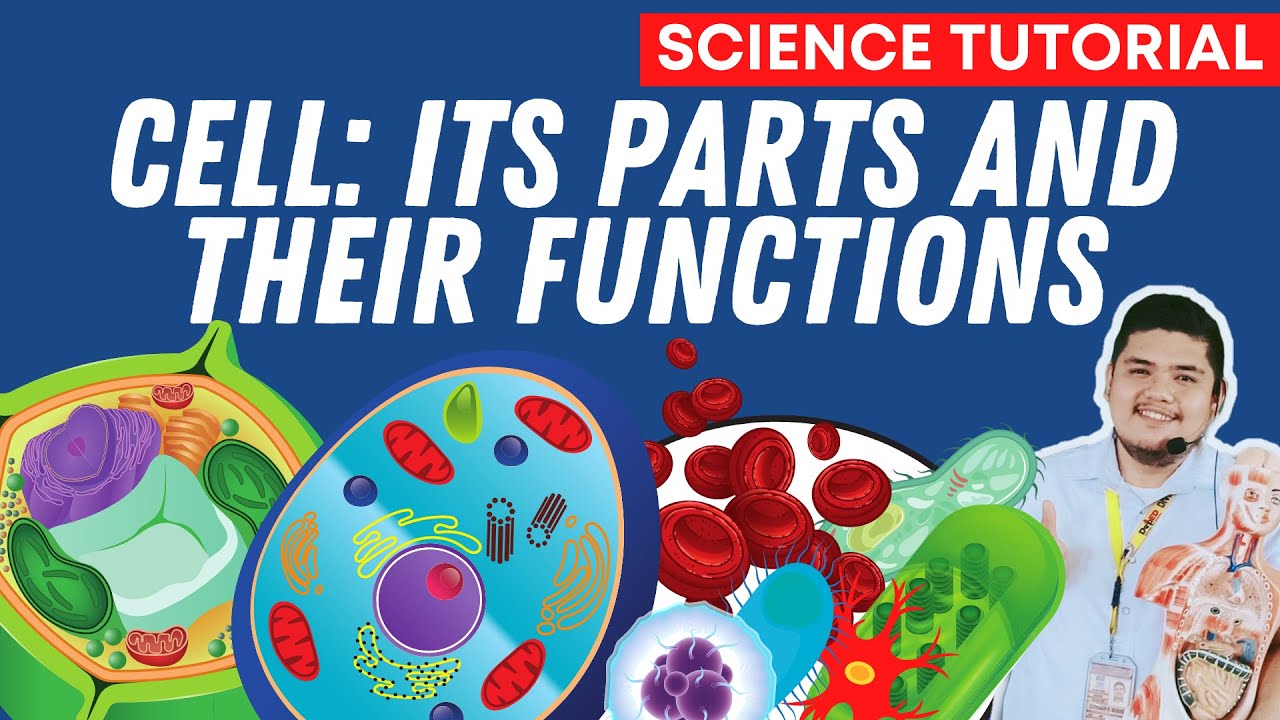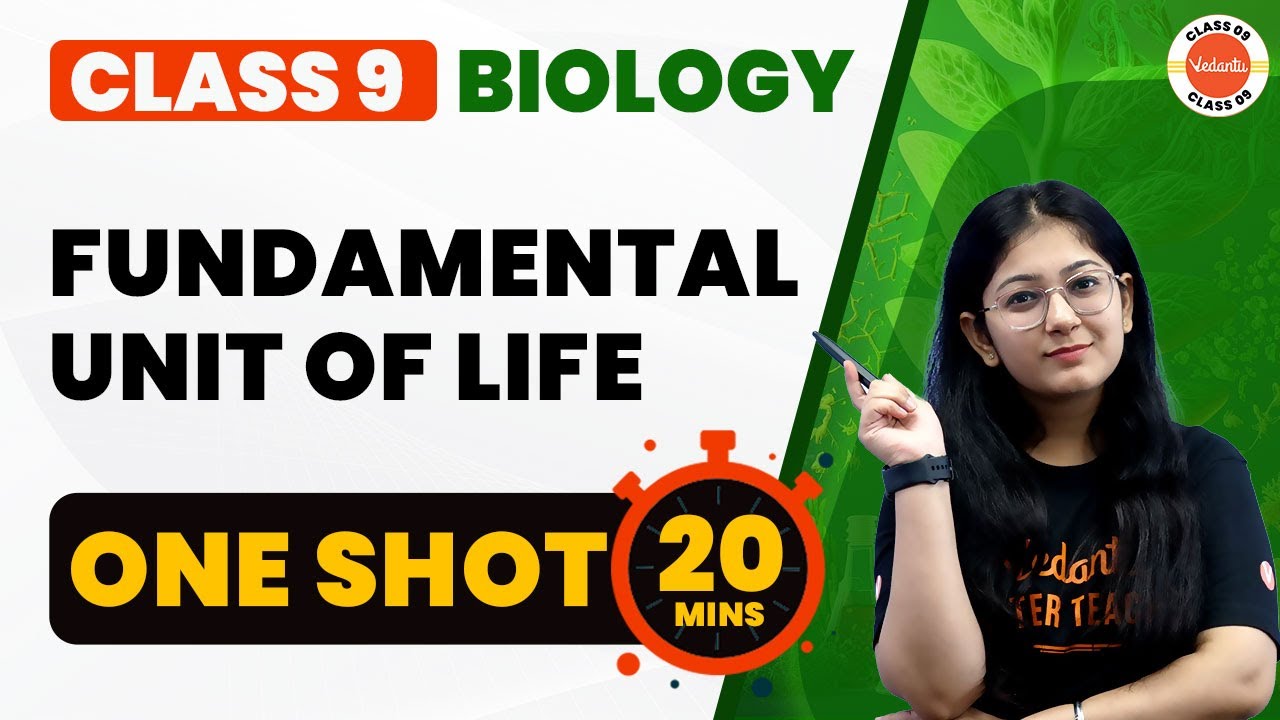10 Key Structures and Functions of the Animal Cell
Summary
TLDRThis two-minute classroom video delves into the fundamental structures of an animal cell, which is the basic unit of life in all animals, including humans. It covers the cell membrane's role in separating the cell from its environment and facilitating molecular transport. The cytoplasm, containing organelles and proteins, is distinguished from the cytosol, the fluid within. Key organelles like the Golgi apparatus for protein modification and packaging, ribosomes for protein synthesis, and the endoplasmic reticulum for protein and lipid production are highlighted. The nucleus, storing DNA and controlling cell function, and the mitochondria, the cell's energy producer, are also discussed. The cytoskeleton's role in cell structure and the functions of centrosomes, lysosomes, vacuoles, and peroxisomes are briefly mentioned. The video is an engaging crash course on animal cell biology.
Takeaways
- 🔬 The animal cell is the fundamental unit of life in all animals, including humans and insects.
- 🏠 The cell membrane, or phospholipid bilayer, separates the cell from its environment and regulates the transport of substances.
- 🌐 The cytoplasm contains all the cell's organelles, proteins, and other structures, but is distinct from the cytosol, which is the fluid within.
- 📦 The Golgi apparatus acts as the cell's packaging and shipping center, modifying and sending out cellular products in vesicles.
- 🔠 Ribosomes, composed of proteins and RNA, are scattered throughout the cell and are crucial for protein synthesis from RNA.
- 🌲 The endoplasmic reticulum comes in two forms: rough, which aids in protein production, and smooth, involved in lipid production and detoxification.
- 🧬 The nucleus serves as the control center of the cell, housing and protecting DNA, which is transcribed into RNA for protein synthesis.
- ⚡ The mitochondria is known as the powerhouse of the cell, producing ATP, the cell's energy currency.
- 🦠 The cytoskeleton provides structural support and shape to the cell, composed of microtubules and microfilaments.
- 🔬 Centrosomes are important for cell division during mitosis, as they help organize microtubules and move to cell ends.
Q & A
What is the primary function of the cell membrane in an animal cell?
-The cell membrane, also known as the phospholipid bilayer, separates the cell from the environment outside and allows for the inflow and outflow of water and other molecules and compounds.
What is the difference between cytoplasm and cytosol in an animal cell?
-Cytoplasm includes all organelles, proteins, and other structures within the cell membrane, while cytosol is the fluid in which these organelles move around.
What is the role of the Golgi apparatus in an animal cell?
-The Golgi apparatus acts as the packaging and shipping center of the cell, modifying molecules and proteins produced by the cell and sending them in vesicles to be shipped out.
Where are ribosomes found in an animal cell and what is their function?
-Ribosomes are found freely floating in the cell or bound to the endoplasmic reticulum. They are responsible for translating RNA into proteins for use within and outside the cell.
How does the rough endoplasmic reticulum differ from the smooth endoplasmic reticulum?
-The rough endoplasmic reticulum contains ribosomes and aids in the production and storage of proteins made on the ribosomes attached to it, while the smooth endoplasmic reticulum lacks ribosomes and is involved in the production of lipids and detoxification.
What is the nucleus of an animal cell and what does it contain?
-The nucleus is the control center of the cell, containing and protecting the DNA. It is where DNA is read by special proteins and transcribed into RNA to be translated into proteins.
Why is the mitochondria referred to as the powerhouse of the cell?
-The mitochondria is the main producer of ATP, the energy currency of the cell, and is responsible for generating the energy required for cellular functions, hence being called the powerhouse.
What provides structural support and shape to an animal cell?
-The cytoskeleton, which contains a vast infrastructure of microtubules and microfilaments, provides structural support and helps maintain the shape of the cell.
What is the function of centrosomes in an animal cell?
-Centrosomes are responsible for the production of microtubules and play a critical role in cell division (mitosis) by moving to the ends of the cell and helping it divide.
What are the functions of lysosomes, vacuoles, and peroxisomes in an animal cell?
-Lysosomes contain digestive enzymes and are responsible for recycling old molecules, proteins, and structures. Vacuoles are membrane-bound storage containers, and peroxisomes contain oxidative enzymes that aid in digestion.
Outlines

Esta sección está disponible solo para usuarios con suscripción. Por favor, mejora tu plan para acceder a esta parte.
Mejorar ahoraMindmap

Esta sección está disponible solo para usuarios con suscripción. Por favor, mejora tu plan para acceder a esta parte.
Mejorar ahoraKeywords

Esta sección está disponible solo para usuarios con suscripción. Por favor, mejora tu plan para acceder a esta parte.
Mejorar ahoraHighlights

Esta sección está disponible solo para usuarios con suscripción. Por favor, mejora tu plan para acceder a esta parte.
Mejorar ahoraTranscripts

Esta sección está disponible solo para usuarios con suscripción. Por favor, mejora tu plan para acceder a esta parte.
Mejorar ahoraVer Más Videos Relacionados

Cells (Parts and Functions), Plant and Animal Cell | Grade 7 Science DepEd MELC Quarter 2 Module 4

PARTS AND FUNCTIONS OF A CELL SCIENCE 7 QUARTER 2 MODULE 3

IMAT Biology Lesson 2.1 | The Cell | Cell Theory & Cell Size

CELL CONTENT

Fundamental Unit of Life One Shot in 20 Mins | NCERT Class 9th Science Chapter-5 | Vedantu Class 9

Class-6, Biology, ICSE, Cell- Structure & Function, full chapter
5.0 / 5 (0 votes)
